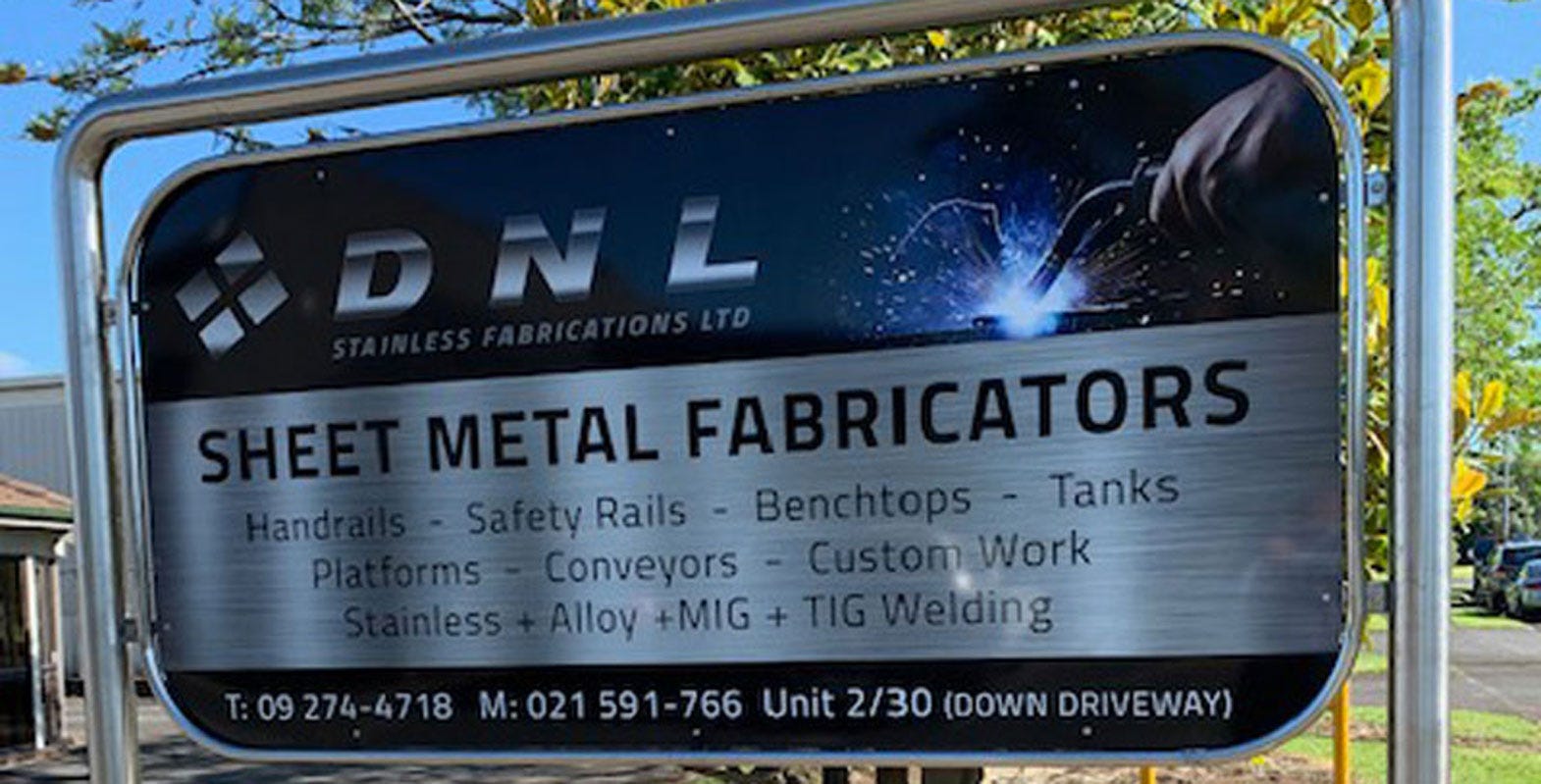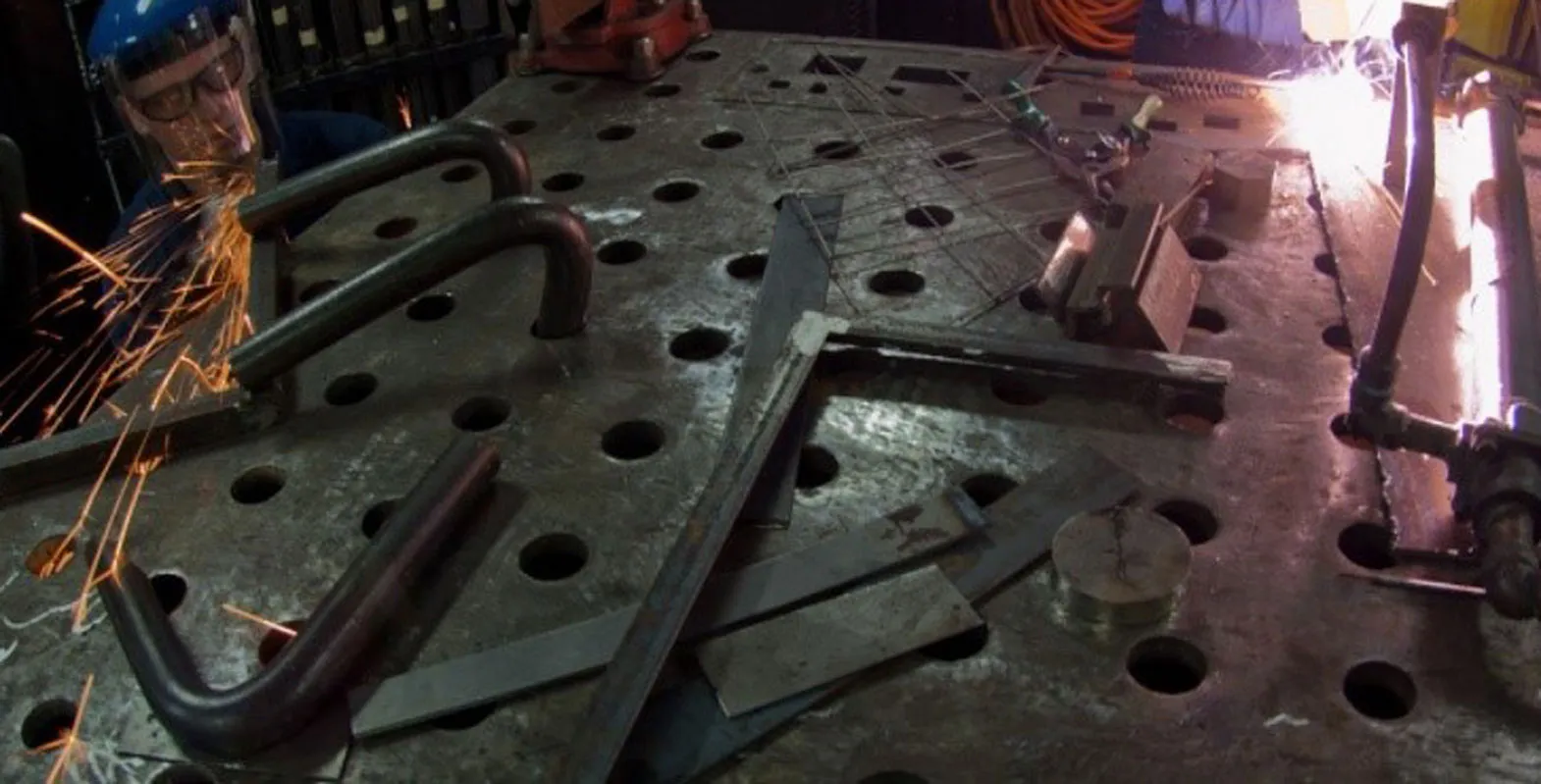How to make sure your stainless steel product looks good after a year
Stand back and admire that perfectly shiny, smooth stainless steel fabrication you've just finished - you've put a lot of effort into getting it to look just right...but will it still look like this in a year, or 6 months? Your customers will be extatic with the results now, but this can quickly go downhill if your stainless steel product doesn't last the distance. Here's some tips to make sure your stainess steel fabrication is still looking and performing it's best after a year..


Two of the major reasons for using stainless steel are (1) corrosion resistance, and (2) the range of surface finishes available that make it asthetically pleasing. The danger with stainless steel fabricating is that if it's not performed at a high standard, you risk contamination which can lead to weakening of the metal, suseptability to rust and pitting, and a product that just doesn't look good after a bit of wear and tear. It's also important to know how to care for the stainless steel product once it's in use to ensure it keeps its performance level and good looks. So how do you make sure your stainless steel product continues to look great and perform well after a year?
Fabrication process
It all starts here. Welding, sanding or any manipulation of the stainless steel surface can leave it vulnerable to contamination. This can lead to unwanted and ugly corrosion.
Welding, weld removal or any process that involves the application of heat to the stainless steel can disturb the passivating chromium oxide layer that protects stainless steel from corrosive contaminants like dirt, dust and other metals found in your workshop. It is therefore essential the stainless steel is kept clean and free of contaminants during the fabrication process so it is able to re-passivate. Passivation will restore, and can even enhance the chromium oxide film on the stainless steel surface bringing back it's natural corrosion resistance.


How do I keep stainless steel clean during fabrication?
Chances are you work in a engineering workshop and not a surgically clean operating theatre, so keeping the work area free of carbon steel, dust, dirt and other particles is not the easiest task. Here are a few tips which will greatly reduce your chances of contaminating the stainless steel during fabrication:
- Ensure good ventilation of the area.
- Keep the area as dust and dirt free as possible with a good dust extrator system.
- When using abrasives make sure they are clean (preferably new) or have not been used on other metals.
Once you've finished manipulating the stainless steel, which probably involved a bit of welding, you will need to clean the whole job down to get rid of any contaminants and allow the stainless steel to passivate. There are two main ways of cleaning stainless steel after welding: mechanically using abrasives, or chemically. The method you use will depend on a number of factors:
- The finish required (does the weld need to be removed?)
- The resources you have available (abrasives, pickling acid, electrochemical cleaning system?)
- Accessibility of the weld (easy to access or tight spaces?)
If the project you are working on requires the removal of the weld for a perfectly flat finish you will need to start with sanding. From there you can continue to use a mechanical cleaning process, or opt for a chemical clean using either pickling paste or electrochemical cleaning.


To obtain a food grade level of cleanliness and ensure all contaminants are removed in the tight spaces around welds, we recommend cleaning with a good quality electrochemical cleaning system. A good electro-cleaner will quickly work to leave the area surgically clean without the use of dangerous chemicals found in pickling paste, and without further scratching the surface of the metal as with mechanical cleaning. Pickling paste must also be timed correctly to obtain good results. If left too long it will cause over pickling and leave marks. If it's not left long enough, the surface will not fully clean and passivate causing long term rust. Electrochemical systems will clean and passivate the stainless steel while bringing it back to its smooth, natural finish. Learn more about electrochemical weld cleaning here:
- The next big thing in stainless steel weld cleaning
- 9 common misconceptions about stainless steel weld cleaning machines
- Forget about pickling paste: Why you no longer need it!
Once your fabrication is complete, the next step is to ensure the entire product is fully cleaned - making sure it is free of fingerprints, smears, dust and dirt. You will then want to protect it from any potentially harmful environmental elements with adequate packaging/covering during the storage and transport process of getting to its final destination.
A few things to keep in mind:
- External environment - If the product is stored outside it will need to be protected from dust, sand and salt that can accumulate on the surface and lead to pitting if not washed away. Although rain should not harm the stainless steel, it can leave water marks that will reduce the new shiny look you want when handing the product over to your customer.
- Internal environment - When storing inside prior to transport, make sure products are protected from potentially harmful substances like harsh chemicals, that could spill or leak. You will also want to protect the newly cleaned product from dust, dirt and other metal particles present in a workshop.
- Transport - Ensure the product is adequately packaged to prevent damage during transport. Knocks and scratches will not only present a less than perfect product, but can leave the stainless surface open to corrosion.
After care
So how do you keep the stainless steel product looking like new once it starts to be used? Like any surface, stainless steel requires regular cleaning of dirt, grime, food particles, or any other substance that it may come into contact with during use. Generally stainless steel can be cleaned with warm water and a mild detergent, however the extent of cleaning will depend on its use. The three most common things that can damage stainless steel and leave it vulnerable to corrosion are:


- Cleaning abrasives - Anything that might scratch the stainless steel's surface including steel wool scrubbers, wire brushes, and scrapers.
- Food deposits & water - Water spots can be caused by hard water left sitting on the surface. These and food deposits that are not cleaned off can break down the layer of protection.
- Chlorides - Found in water, food, table salt, but mainly found in many household and industrial cleaners.
Exterior use
For many buildings, handrails, down-pipes, architectural sculptures, boats and other stainless steel fabrications that live outside, rain or hosing down with fresh water will be enough to keep the fabrication looking good. However harsher environments, such as coastal conditions where the salt can cause corrosion of the stainless steel surface require more regular cleaning to remain in pristine condition.


Generally stainless steel located within 5km of the ocean can be prone to tea staining and discolouration if not cleaned regularly. In these situations it is recommended the stainless steel is cleaned at least once a month to remove salt deposits. If salt deposits are not removed this can cause pitting of the surface which is difficult to remove, and can lead to corrosion and rusting, and ruining the look of the once glamorous stainless surface. In most instances the salt can be removed by washing down the surface with fresh water. In highly corrosive environments it may be beneficial to give the stainless steel a chemical treatment and polish once every 4-6 months.
Food and sanitizing
When food particles stick or get stuck in parts it is tempting to use harsh abrasives or chemicals to scrub them off, however this can damage the surface of the stainless steel. Here's some tips on cleaning:
- Always use the mildest cleaning solution and sanitizer to efficiently do the job (eg. wash with warm/hot water and mild detergent, rinse and dry).
- For tough, baked-on particles, the stainless steel can be soaked in hot water for 20 minutes prior to cleaning.
- If commercial cleaners are required, make sure these are developed for use on stainless steel and follow the instructions on the product.
- Use a microfibre or other soft cloth for cleaning. If scrubbing is required, use a plastic/nylon bristled brush to avoid scratching and contaminating the stainless surface. Harsh abrasives such as steel wool pads can leave paricles of steel behind which may cause contamination and rust marks.
- Always rub/scrub in the same direction as the grain of the stainless steel.
- Strong mineral acids should never be used to clean stainless steel. If they do come into contact with the stainless steel, wash them off immediately.
- After any cleaning application the stainless steel should always be rinsed free of any soaps or chemicals and dried. Drying will ensure no water marks are left on the surface.
So there we have it. If you want to keep your stainless steel fabrication looking good after a year take these two steps:
- Make sure you adequately clean and passivate the stainless steel during the fabrication process.
- Take measures to ensure the stainless steel is properly cleaned and cared for during use.
 Need assistance?
Need assistance?







